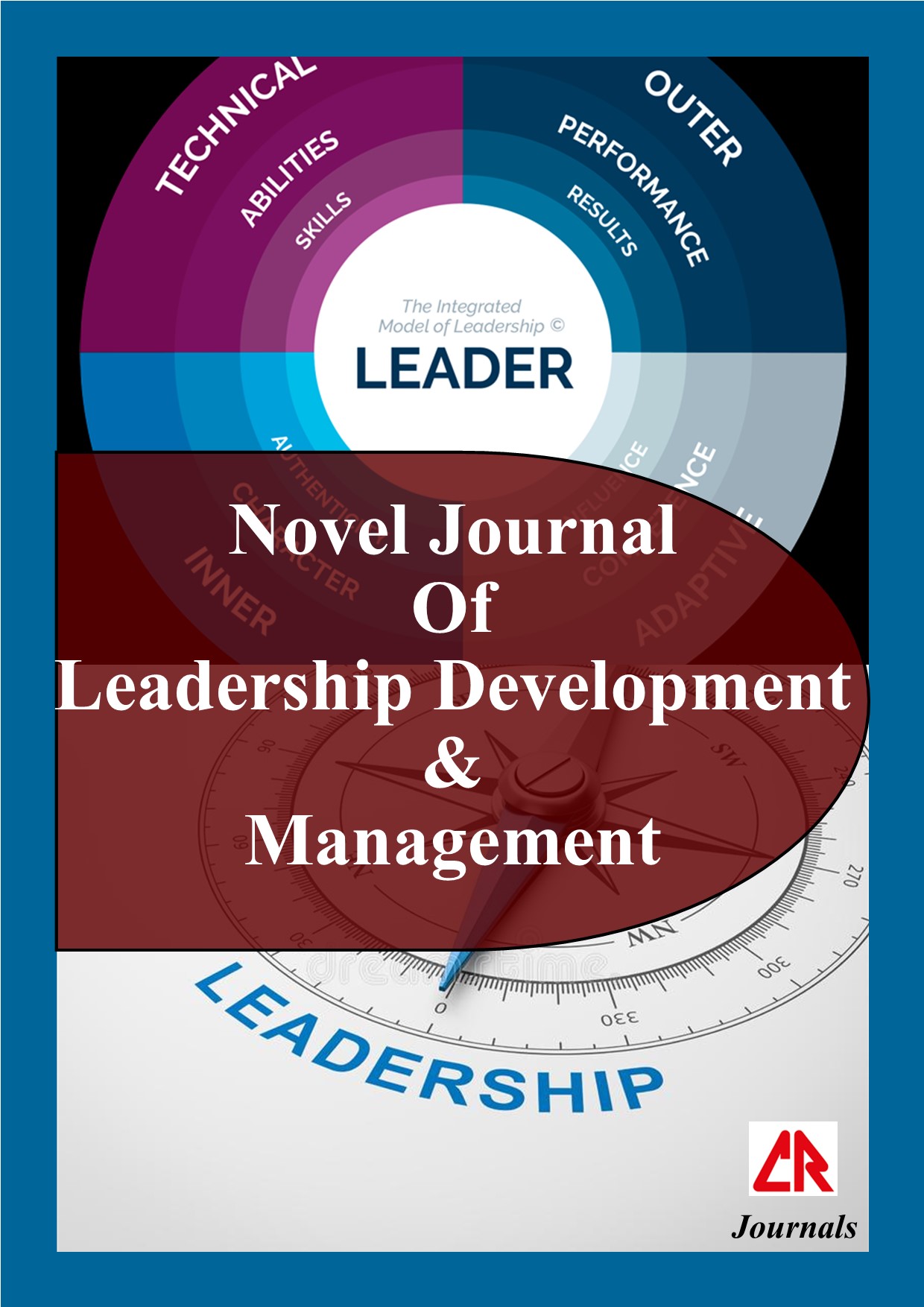
Novel Journal Of Leadership Development & Management
Novel Journal Of Leadership Development & Management Management is focused towards the rapid publication in the following areas of Structure of the organization, Activities of the organization, Management decisions, Strategic Management process, Experience curve, Globalization and the virtual firm, Time scales and production development planning, Analysis of internal and external factors for product development, Corporate strategy and portfolio theory, Competitor Analysis, SWOT Analysis, Generic competitive strategic thinking, Internet and information availability, Age of Discontinuity-new technologies, globalization, cultural pluralism and knowledge capital.
Topics covered by this Journal are review papers, research papers, interviews, news, companies/ institutions write-ups, short popular articles and case studies.
All contributions to the Journal are thoroughly refereed and are selected on the basis of quality and originality of the work. The Journal publishes the most noteworthy novel research papers in the form of reviews and reports on innovative concepts in all areas pertaining to its scope and research being done worldwide, hence ensuring its scientific precedence and importance.
Peer Review Policy
The peer review process for journal publication is essentially a quality control mechanism.After an editor receives a manuscript, the first step is to check that the manuscript for quality, originality, validity and whether appropriate method has been followed. If it does, then the editor moves to the next step, which is peer review. Peer review is the critical assessment of manuscripts submitted to journals by experts who are usually not part of the editorial staff. The editor will send the manuscript to two or more reviewers. The peer reviewers will then prepare a report that assesses the manuscript, and return it to the editor.
After reading the peer reviewer's report, the editor will decide to do one of three things: reject the manuscript, accept the manuscript, or ask the authors to revise and resubmit the manuscript after responding to the peer reviewers’ feedback. If the authors resubmit the manuscript, editors will sometimes ask the same peer reviewers to look over the manuscript again to see if their concerns have been addressed. This is called re-review.
The final decision on the manuscript is taken by the editor. Only when there are any conflict issues, the editor-in-chief of the journal is involved.
Journal decision-making process
After a paper is submitted to a journal, the journal editor screens the manuscript and decides whether rejected if it is found to be of insufficient quality, outside focus and scope of the Journal or if they are considered not original.Editors-in-chief have full authority over the entire editorial content of the journal and the timing of publication of that content with no interference from journal owners. Editors should defend the confidentiality of authors and peer reviewers (names and reviewer comments).
Author will receive prompt acknowledgement of submission of articles. If acknowledgement is not received within two weeks, please contact the Administrative Office, preferably by e-mail.
AUTHOR GUIDELINES
The manuscript should be in English and prepared on the following lines:- Title: Title should be brief, specific and informative, the scientific name(s) in italics/underlined.
Authors: Names of authors to be typed, in capitals unaccompanied by their degrees, titles etc.
Address: Address of the institution where the work was carried out is given below the name(s) of author(s). Present address of correspondence should be given as footnote indicating by asterisk the mark (*), the author to whom the correspondence is to be addressed.
Abstract: The Abstract should be informative and completely self-explanatory, briefly present the topic, state the scope of the experiments, indicate significant data, and point out major findings and conclusions. The Abstract should be in about 100 to 150 words. Standard nomenclature should be used and abbreviations should be avoided. No literature should be cited.
Key words: Following the abstract, key words not more than 8 (Eight ) that will provide indexing references should be listed and in alphabetical order.
Introduction: This should be brief and the review of the literature should be relevant to the theme of the paper. Extensive review and unnecessary detail of earlier work should be avoided.
Materials and Methods: It should describe an appropriate methodology etc. but if known methods have been adopted, only references are cited. It should comprise an experimental design and techniques with experimental area and institutional with year of experiment.
Results and Discussion: It should be combined to avoid repetition. The results should not be repeated in both tables and figures. The discussion should relate to the significance of the observations.
Conclusion and Acknowledgement: Table numbers should be followed by the title of the table, Line drawings/photographs should contain figure number and description thereof. The corresponding number(s) of Tables, Figures etc should quote in the text. Size of tables and figures should be below 1 MB.
References: Author(s) – Family name and initials. Title of article (Italics). Title of Journal (Abbreviated) , Publication year; Volume (Issue): Pages.
1. Srivastava N, Diwakar M, Ajnara J. Evaluation of Nanostructured Metal Ceramic Coatings for solar thermal Applications. IJNS. 2008; 336(7646): 701–4p. (Journal publication less than three Authors)
2. Hanna JN, McBride WJ, Brookes DL, et al. Hendra virus infection in a veterinarian. Med J Aust. 2006; 185(10): 562–4p. (Journal publication having more than three Authors)
3.. Srivastava N, Diwakar M. Evaluation of Nanostructured Metal Ceramic Coatings for solar thermal Applications. Psychol Sport Exerc. 2007;10(4):422–34p. doi:10.1014/j.psychsport.2007.03.007. (Electronic article – with DOI number)Page/Line.
Number: Authors are requested to mention Page number and Line number to each line in the MS for easy and quick review. Text Alignment, line spacing, word count, figures, tables etc. must be as per format.
Yet To Be Published